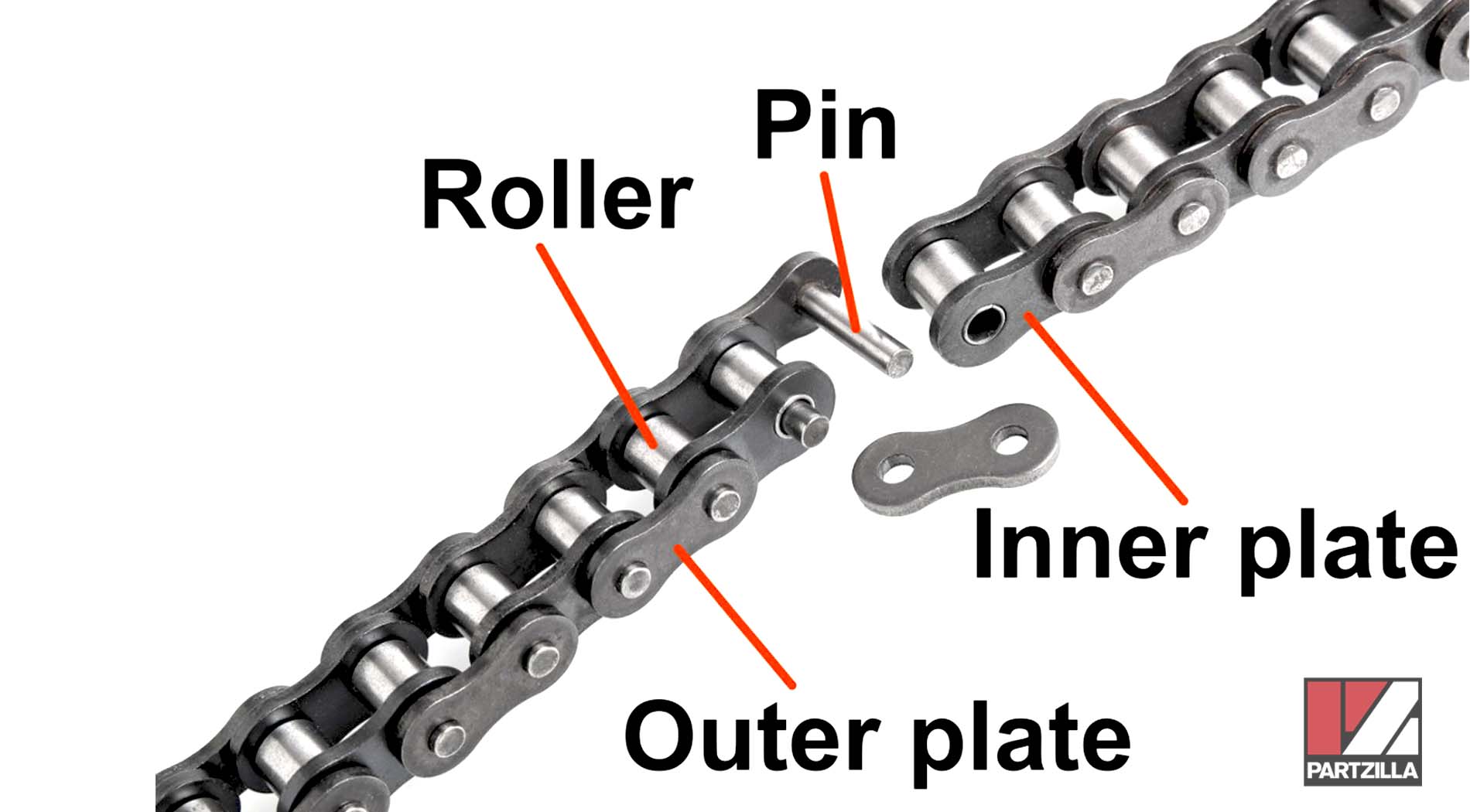How to Measure Motorcycle or ATV Chains
Learning how to measure a drive chain for a powersports vehicle only takes a few minutes, and you’ll never have trouble buying the correct size chain again.
Understanding Motorcycle and ATV Chains
Chains fitted to motorcycles and ATVs are called roller chains. They’re made of individual links, each one consisting of two inner plates held in place by two pins. To increase efficiency and reduce wear, each pin runs through a roller that rotates around it. Every link is joined to the next link by two outer plates, thus forming a chain.

Most motorcycle and ATV chains have O-rings located between the inner and outer plates. These O-rings seal in factory-applied lubricant between the pins and rollers to protect them against dirt. You’ll need to decide whether you want to buy an O-ring or a standard chain, but the type you choose doesn't affect measurement.
Measuring Motorcycle and ATV Chains
Motorcycle and ATV chains are measured by their pitch and width.
- Pitch: The distance between the centerlines of the two pins that form a link.
- Width: The distance between the inside faces of the two inner plates that form a link.
These measurements are expressed as a 3-digit number such as 420, 525 or 630. The first digit represents the pitch and the last two digits represent the width.

Chain pitch is measured in eighths of an inch. Motorcycle and ATV chains have a pitch number of either 4, 5 or 6. If the distance between the centerlines of the two pins in a link is 4/8th of an inch, the chain has a pitch number of 4.

4 pitch: Measure 4/8” between the pins. Most common on small dirt bikes and junior ATVs.
5 pitch: Measure 5/8” between the pins. Most common on dirt bikes, dual sport bikes, street motorcycles and most ATVs.
6 pitch: Measure 6/8” between the pins. Most common on high horsepower sport bikes.

To measure the pitch, put a ruler, tape measure or digital caliper beside the chain and measure between the pins in a single link.

Chain width is measured in eighths and sixteenths of an inch. Motorcycle and ATV chains have a width number of either 15, 20, 25 or 30. If the distance between the two inner plates in a link is 3/8th of an inch, the chain has a width number of 30.

15 width: Measure 3/16” between the inner plates. The 1 indicates the width is 1/8” and the 5 indicates there is an additional half of 1/8” in width, which is 1/16”. Adding 1/8” and 1/16” gives you a total width of 3/8”.
20 width: Measure 2/8” between the inner plates, which is 1/2”. The 2 indicates the width is 2/8” and the 0 indicates there’s no additional width.
25 width: Measure 5/16” between the inner plates. The 2 indicates the width is 2/8” and the 5 indicates there is an additional half of 1/8” in width, which is 1/16”. Adding 2/8” and 1/16” gives you a total width of 5/16”.
30 width: Measure 3/8” between the inner plates. The 3 indicates the width is 3/8” and the 0 indicates there’s no additional width.
To measure the width, put a ruler, tape measure or digital caliper across the chain and measure between the inner faces of the inner links in a single link.

415, 420 and 428 Chains
Scooters and smaller dirt bikes and ATVs.
520 Chains
Dirt bikes, dual-sports and ATVs.
525 Chains
Street bikes
530 Chains
High-performance bikes
630 Chains
Drag bikes and some heavy cruiser bikes
Virtually all motorcycle and ATV chains fall into one of the seven chain sizes in the table below.

NOTE: There’s also a 532 chain that’s lighter than a 630 chain but stronger than a 530 chain. Riders who find their motorcycles fitted with 532 chains often choose to switch the chain and sprocket set to a 530 because they’re cheaper to buy.
After measuring your vehicle’s chain and knowing the exact size you need, check out our chains section to find the one you need for your motorcycle or ATV.





